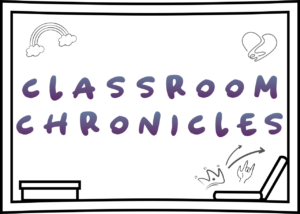Understanding the Core Concept of Inbound Closing
Inbound closing is a sales approach focused on guiding prospects who have already expressed interest in a product or service toward making a confident purchase decision. Instead of cold calls or unsolicited outreach, this method relies on potential customers initiating contact after engaging with marketing materials, website content, or social media campaigns. By the time a sales professional steps in, these leads have researched, compared, and shown genuine curiosity about a solution. This environment allows a salesperson to act as a consultant rather than a traditional closer, helping the buyer evaluate options rather than pushing for a sale. The emphasis is on creating trust and providing value at every interaction. Because the prospect is already warm, conversations can focus on clarifying details, addressing concerns, and finalizing an agreement that feels natural for both sides. Understanding what is inbound closing helps companies adopt a more human-centered approach to winning business.
The Evolution of Buyer Behavior
Modern buyers have unprecedented access to information, changing the way sales teams operate. Before contacting a company, people read reviews, watch demos, and compare competitors, arriving well-informed and sometimes ready to negotiate. This shift eliminates many of the old-school tactics that relied on persuasion or urgency. Instead, inbound closing capitalizes on the prospect’s proactive research, offering guidance tailored to their specific needs. Buyers now expect transparency and responsiveness, not pressure. They also want to feel in control of the decision-making process, which means that the salesperson’s role is more about facilitation than persuasion. Recognizing these behavioral changes is essential for anyone wondering what is inbound closing and why it matters in today’s digital marketplace.
Key Components of an Effective Inbound Closing Process
A strong inbound closing strategy starts with qualifying leads to ensure they are ready to buy. Discovery calls help identify pain points and confirm that the product or service aligns with the prospect’s goals. Personalization plays a major role; tailored solutions demonstrate that the business understands each buyer’s unique challenges. CRM tools track interactions and provide insights into preferences, allowing for timely follow-ups. The timing of an offer is equally important, as making a proposal too early can stall momentum while waiting too long may let competitors gain ground. Throughout every step, transparency and clarity build trust, ensuring that the final decision feels like a partnership. These elements create a repeatable system that can scale across teams and industries.
Essential Skills Every Inbound Closer Must Master
Inbound closers need a distinct set of skills to excel. Active listening helps uncover subtle cues and hidden objections, allowing the salesperson to address concerns before they become barriers. Empathetic communication demonstrates understanding and builds rapport, creating a positive experience for the buyer. Negotiation in this context is about finding win-win outcomes rather than using pressure tactics. Confidence in product knowledge reassures prospects that they are making the right choice. Adaptability is critical because each conversation follows its own rhythm and requires customized responses. Maintaining a calm, professional demeanor even when faced with hesitation can keep deals moving forward. Mastering these skills turns an ordinary salesperson into a trusted advisor who embodies the principles of what is inbound closing.
Proven Steps to Implement Inbound Closing in a Sales Strategy
Organizations can integrate inbound closing by aligning marketing and sales teams to create a seamless buyer journey. A clearly defined sales funnel ensures that warm leads flow smoothly from marketing content into direct conversations with closers. Automation tools help manage follow-ups and nurture relationships without overwhelming staff. Consistency in messaging across emails, social posts, and calls reinforces trust and credibility. Regular training keeps the sales team updated on best practices and evolving customer expectations. Metrics such as conversion rates, deal velocity, and customer satisfaction guide improvements and reveal where adjustments are needed. This structured approach ensures that the process remains scalable and measurable as the business grows.
Key implementation actions include:
- Aligning marketing campaigns with sales objectives to target the right audience
- Using CRM platforms to track lead behavior and engagement levels
- Automating email sequences for timely, personalized follow-ups
- Establishing clear performance metrics for every stage of the funnel
- Conducting regular team training sessions focused on consultative selling
Tools and Technologies That Support Inbound Closers
The right tools can dramatically improve efficiency and results. Customer Relationship Management (CRM) platforms like HubSpot or Salesforce track every interaction, ensuring no detail is missed. Email automation systems send follow-up messages at optimal times, keeping prospects engaged without manual effort. Video conferencing software enables personalized virtual meetings, which is vital when prospects are located across different regions. Analytics dashboards provide real-time insights into key performance indicators, allowing teams to adjust strategies quickly. Social listening tools help sales professionals stay informed about industry trends and potential buyer concerns. Integrating these technologies reduces repetitive tasks and gives salespeople more time to focus on high-value conversations. These innovations perfectly complement the philosophy behind what is inbound closing.
Common Challenges and How to Overcome Them
Despite its advantages, inbound closing presents unique hurdles. Some prospects hesitate even after thorough research, requiring patience and strategic follow-ups. Over-qualifying leads can waste resources, so balancing standards with flexibility is key. Maintaining a genuine human connection in a digital-first world also demands creativity, such as personalized video messages or thoughtful check-ins. Keeping the sales pipeline full is another challenge, especially for teams transitioning from outbound tactics. Competition can be fierce when multiple companies target the same well-informed buyers. To overcome these issues, sales professionals should focus on consistent communication, authentic relationships, and continuous skill development. Addressing these challenges head-on ensures the inbound closing process remains effective and scalable.
Real-World Applications Across Industries
Inbound closing is valuable across diverse sectors. In software-as-a-service (SaaS), prospects often sign up for demos or free trials, making them perfect candidates for consultative conversations that highlight product value. High-ticket coaching and consulting services rely on deep trust, which inbound closing naturally fosters through personalized engagement. E-commerce businesses benefit when customer service teams use inbound principles to guide hesitant shoppers toward final checkout. B2B service providers can shorten lengthy sales cycles by addressing complex questions during inbound calls. Even healthcare and education institutions leverage these methods to attract and retain clients or students who have already researched their options. Each industry demonstrates that understanding what is inbound closing creates opportunities for stronger, more authentic customer relationships.
Frequently Asked Questions (FAQ)
What is the difference between inbound closing and inbound marketing?
Inbound marketing focuses on attracting and nurturing leads through content and campaigns, while inbound closing deals with converting those leads into paying customers once they engage directly with sales.
How long does it take to master inbound closing skills?
The timeline varies, but many professionals gain proficiency within six to twelve months of focused practice and training.
Can small businesses apply inbound closing without a large sales team?
Yes. Even solo entrepreneurs can implement these methods using automation tools and a well-structured sales funnel.
What metrics indicate inbound closing success?
Key metrics include conversion rate, average deal size, customer satisfaction scores, and sales cycle length.
Is inbound closing effective for low-ticket products?
While most beneficial for high-value offerings, inbound techniques can still improve conversions for lower-priced items by providing a personalized touch.
Takeaway
Inbound closing represents a modern, customer-centered way to convert interested prospects into loyal clients. By focusing on trust, personalization, and timely engagement, sales professionals can guide well-informed buyers through the final stages of their decision with confidence and ease. When combined with the right skills, tools, and strategic planning, this approach strengthens relationships, shortens sales cycles, and creates long-term business growth. Understanding and applying what is inbound closing is no longer optional—it is a competitive advantage for any organization seeking sustainable success in today’s market.

